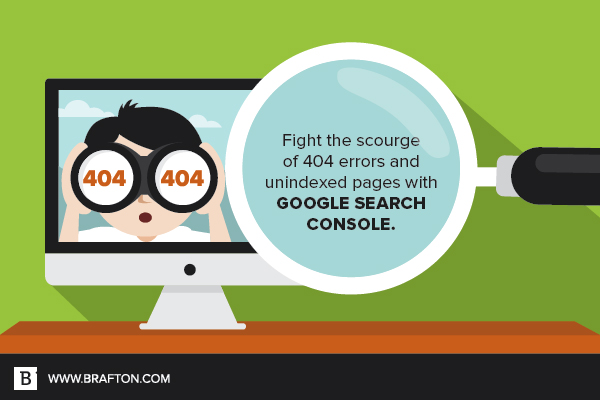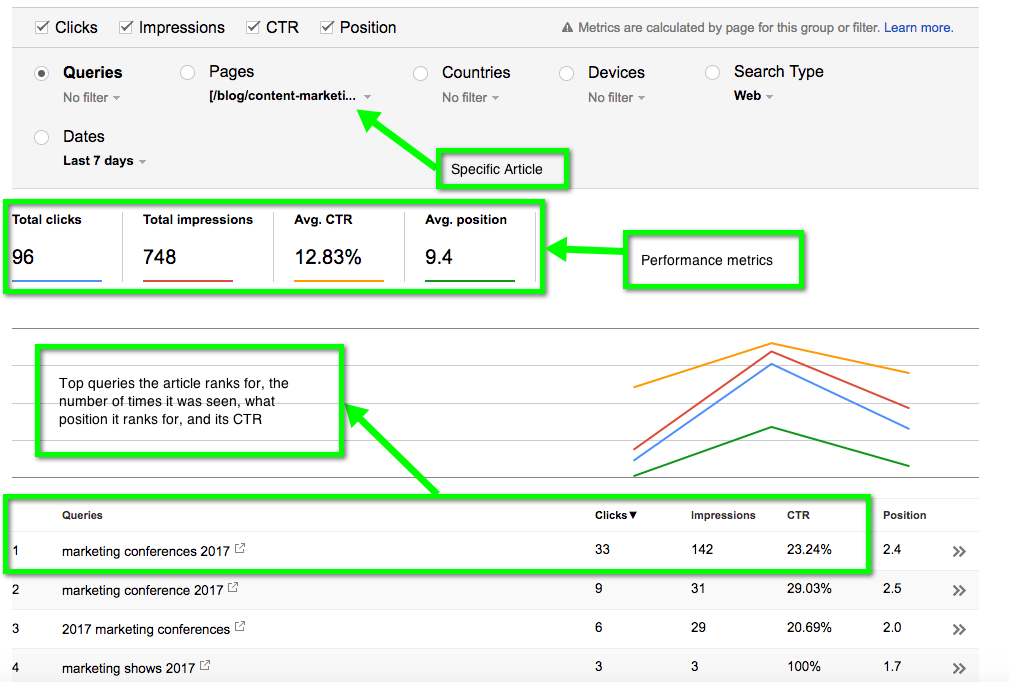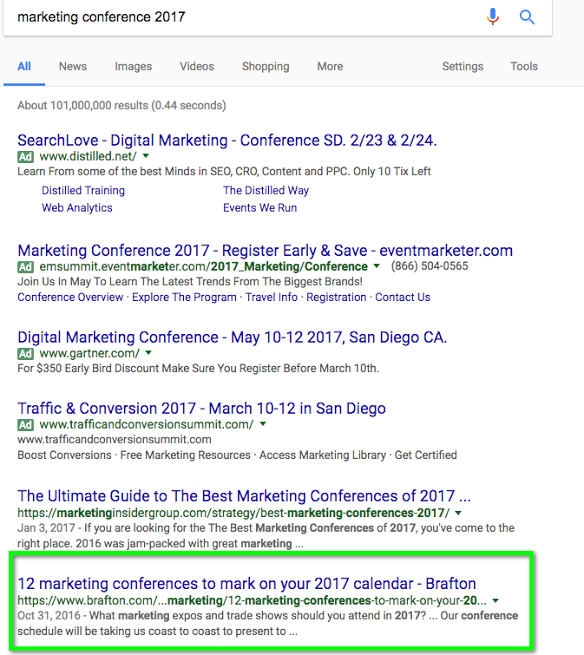Google Analytics is invaluable, but it doesn’t give you the full picture of your website’s health.
Enter Search Console.
A free service, Search Console enables you to examine and manage your website’s presence on Google search results pages. Google’s service gives you insights into content performance and technical SEO issues, as well as the tools and resources to fix them.
“Search Console will provide you with performance data you can’t otherwise get through Google Analytics, like overall search presence, so you can see by article and by query how much visibility your content is getting,” said Jeff Baker, Brafton’s Director of Digital Marketing Strategy. “This is absolutely critical because it will tell you how well your content is performing from a search standpoint. Without Search Console, you won’t know how often your content is actually being seen, how many clicks it gets, or what your average position is.”

Among the many ways Search Console can supercharge your content marketing insights, three areas in particular stand out:
- Impressions.
- Clicks.
- Average position.
Impressions: Your Holy Grail
Any time one of your website’s URLs appears in a search result, that counts as an impression. While most definitely a broad metric, impressions provide precious insight.
“Impressions are the Holy Grail metric,” Jeff said. “For one, they tell you if your content is being seen. In Search Console, you can break it down from the entire site to an individual page. The impressions metric will tell you how many times what you’re segmenting has been seen.”
This metric can also help you spot red flags. For instance, if you’re receiving a high level of impressions but your click-through-rate is nil, it may indicate a problem that needs to be addressed. Maybe you’re ranking for a keyword but your content does not serve the searcher’s intent. Perhaps your content is valuable and relevant, but a bad headline or poor meta description is turning potential viewers away.
Your ultimate goal is generating conversions from internet users who are in the market for what you’re offering, not winning a popularity contest for a generic word or phrase.
Clicks: Who’s making moves?
As you might imagine, clicks occur when users click on a link that takes them to your site. By dividing your clicks by impressions, you can calculate your click-through-rate, which should have a direct correlation to your average position on search results pages.
While there are exceptions to every rule, our own research illustrates how Google uses CTRs to refine search results. In short, if people aren’t clicking, you can bet your website will be booted onto the dreaded second page of search results or beyond.
Average position: Where you live
Your average position is the average position of all search queries that have returned your website as a search result. Say your URL ranks high for one search query, but low for another. Grouping these together and averaging them out will provide you with your average position.
“Everyone wants to rank on the first page, whether it’s for core landing pages or blogs,” Jeff said. “Your domain authority and page authority will play a large role in that, but the searcher intent of the keywords and topics you rank for also play a big part in your success.”
Average position rankings will tell you whether your SEO efforts are up to snuff, but don’t lose sight of what matters most to your business. It’s more important to rank high for a specific conversion-oriented term that gets fewer search results than it is to rank well for a very broad term that doesn’t satisfy the intent of your true target audience. Your ultimate goal is generating conversions from internet users who are in the market for what you’re offering, not winning a popularity contest for a generic word or phrase.
Step by step
Note you can filter clicks, impressions, CTR and average position for queries, specific pages, countries, etc.

For example, we wanted to know about the performance of this article we wrote a few months ago. We pulled three days of data (don’t want to give away all the juicy stuff).

You can see this article received 748 views (impressions) in Google searches and 96 clicks for a 12.8 percent CTR, and it averaged in the 9.4 position for all queries that generated this link as a result.
We can then see exactly which queries this article ranked for, what position it ranked for that query, how many times it was seen, and how many impressions it got. Check it out:

And there we are. We now know that this article ranks roughly No. 2 (organically) for this search term, gets 748 views every three days, and is clicked on 12.8 percent of the time. Cool.
Play in your sandbox
While Google itself can certainly provide you with guidance on how to utilize Search Console, the best way to become familiar is to play around. Go ahead, get weird.
“My advice would be to check everything out and see what it can do,” Jeff said. “See all the reports and capabilities and think about how you can apply them to your own website.”
If you do have a question or concern and would like a Webmaster Tools walkthrough, feel free to reach out to a Brafton expert for assistance. We’re always ready to play in the metrics sandbox.






